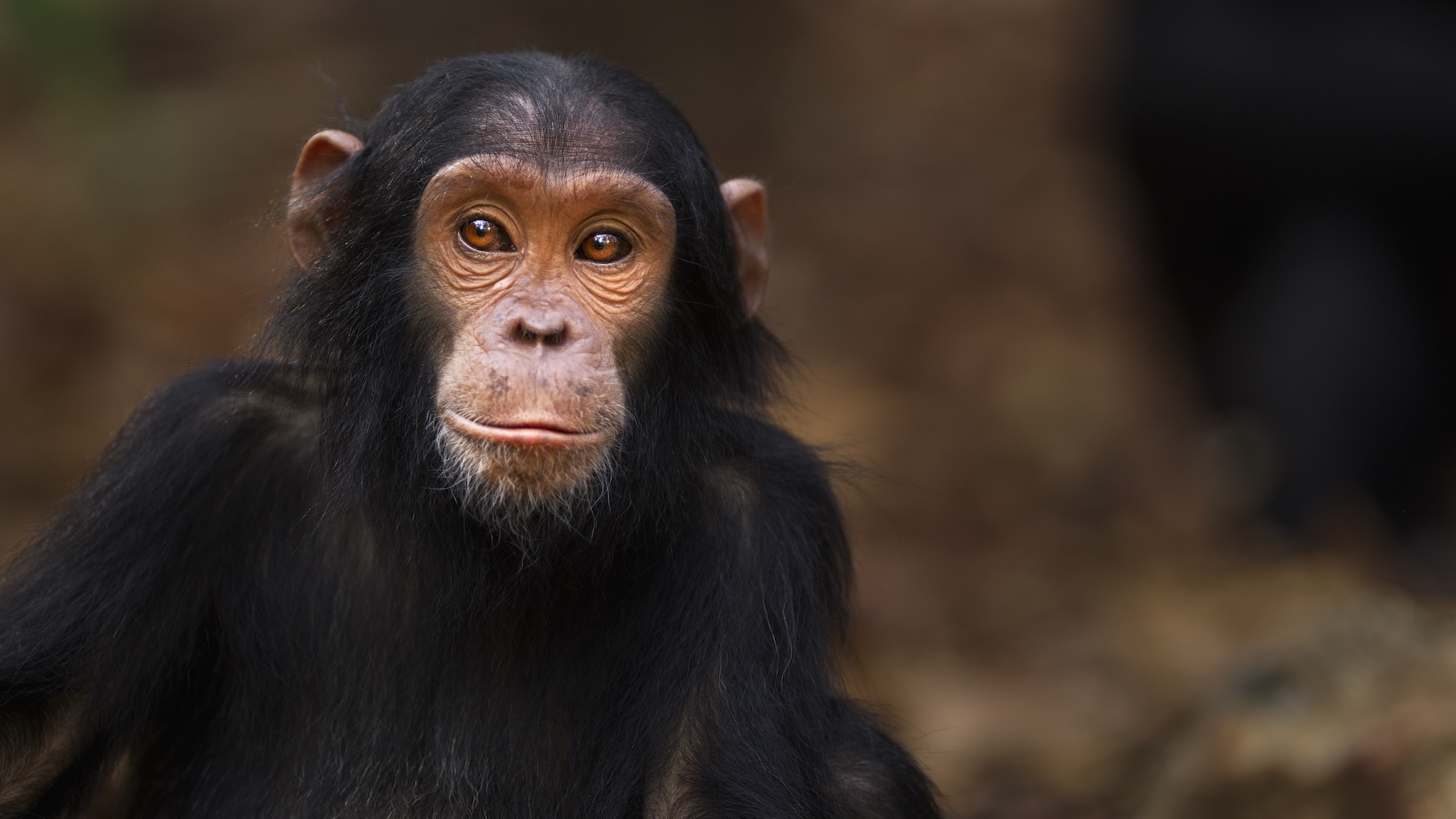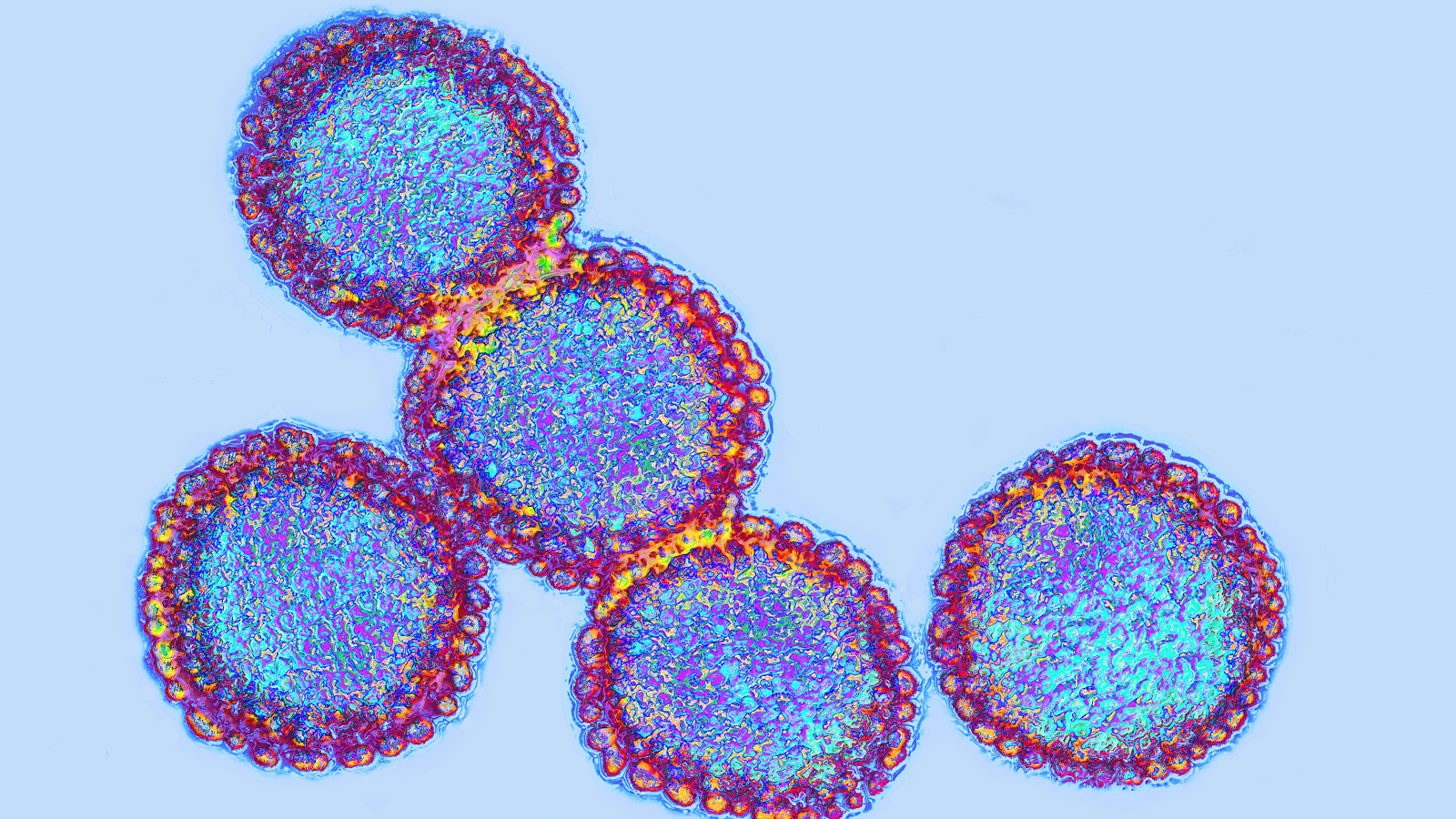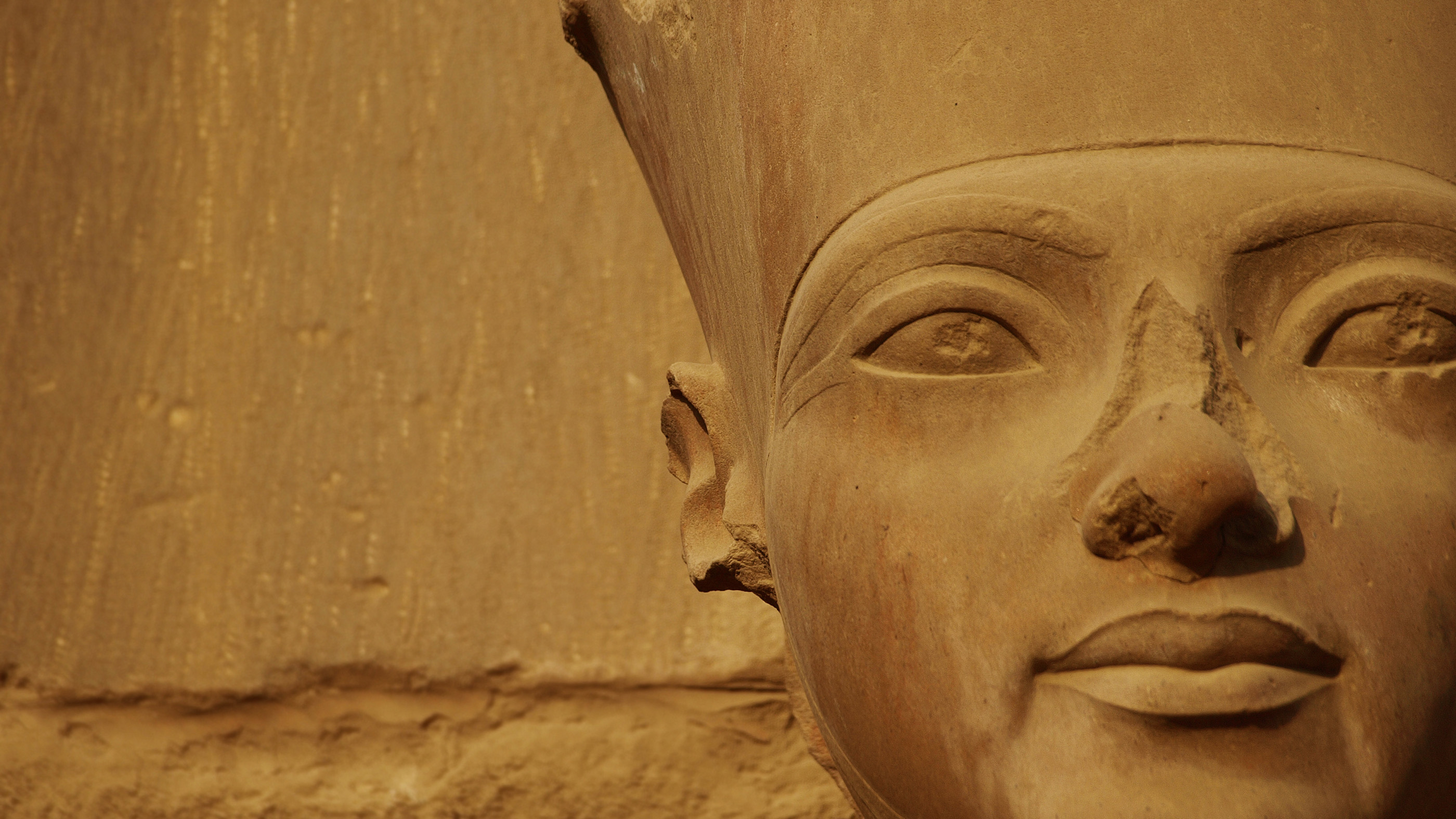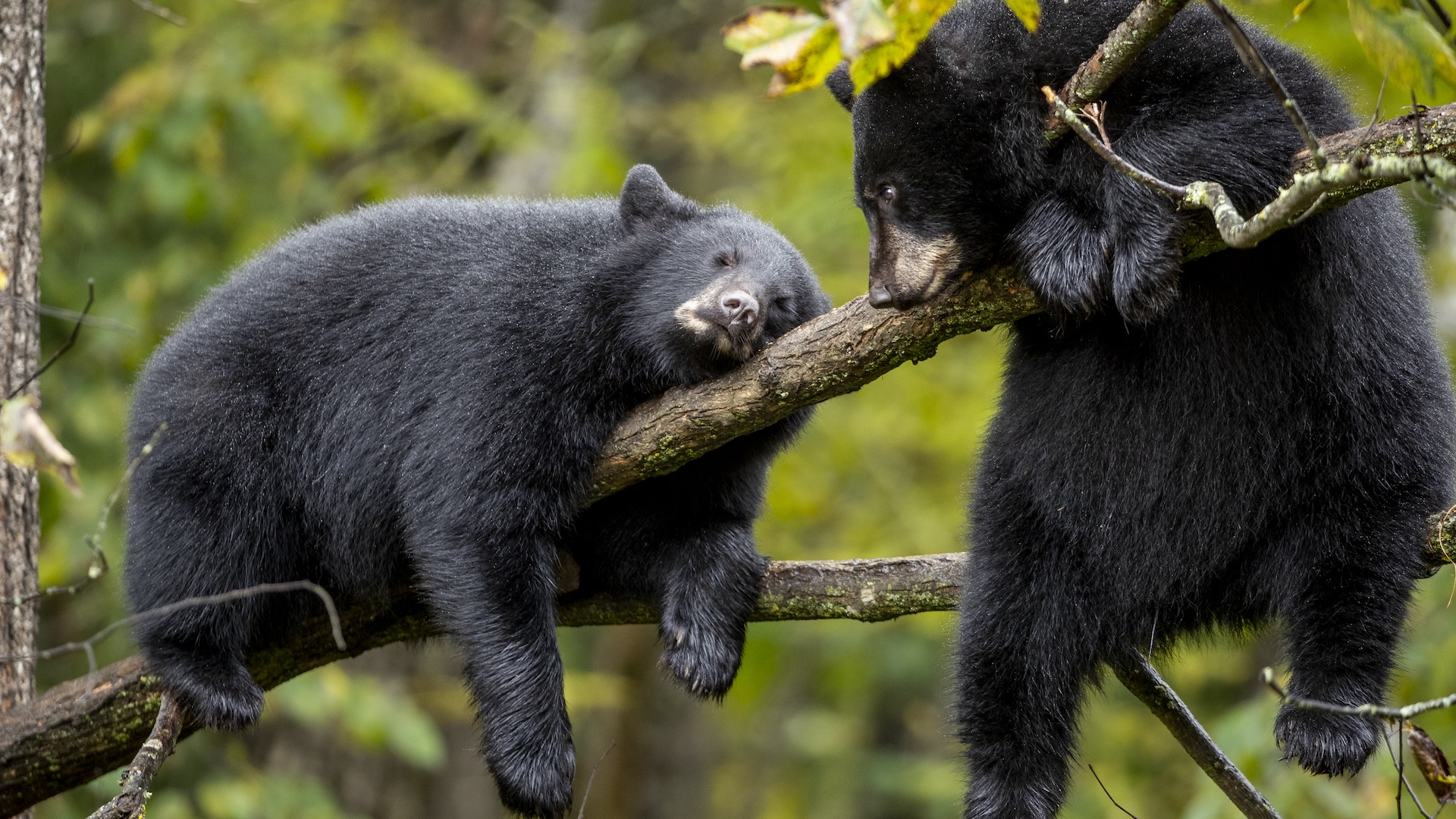Frogs: The largest group of amphibians
Fun facts and frequently asked questions about frogs, the largest and most diverse group of amphibians on Earth.
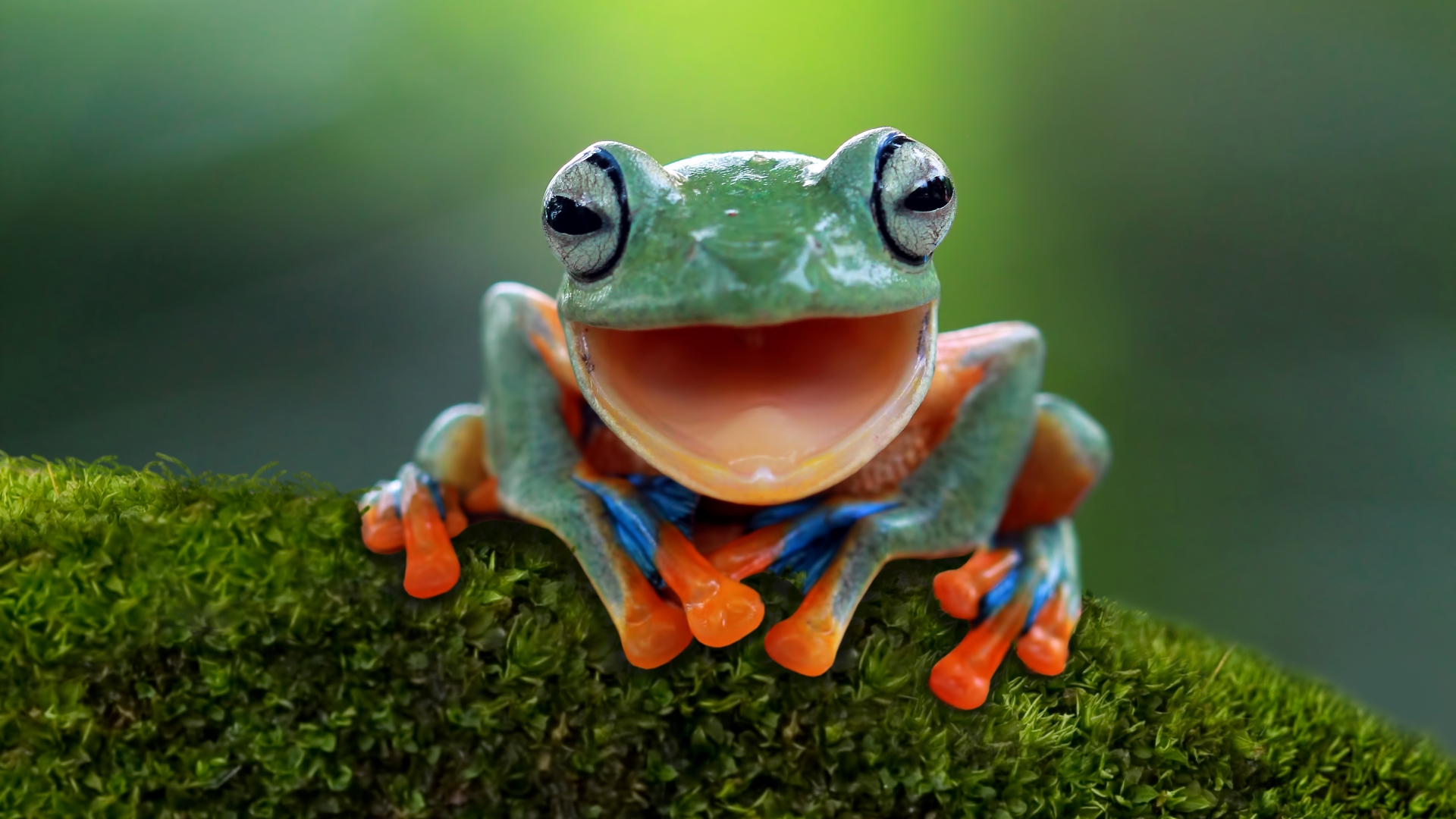
Frogs and toads make up the largest group of amphibians. Species in this order, called Anura, substantially outnumber those in the two other living orders of amphibians — Caudata (salamanders) and Gymnophiona (caecilians). As of August 2022, Anura had 7,486 of the 8,478 known amphibian species, according to Amphibian Species of the World, a reference website from the American Museum of Natural History in New York.
Frogs and toads are among the most diverse animal groups. Though they might be most famous for their croaking and jumping, these animals have a wide variety of unique traits and behaviors. Like many other animals, frogs and toads are suffering greatly from human-related threats, and many species face imminent extinction.
Frogs vs. toads
"Frog" and "toad" are common names that don't mean much from a scientific perspective. "Frog" can be thought of as the more encompassing word as it's the common name for the Anura order, and used in the common names of most of Anura's species. "Toad" is used more selectively in the common names of certain species or groups.
Amphibians with "toad" in their common names often have characteristics that are not typically thought of as frog-like. For example, "toads" usually live in drier habitats — and have drier, bumpier skin and shorter hindlimbs — than is typical for frogs, according to the Burke Museum in Seattle. However, all toads can be called frogs.
Related: What's the difference between a frog and a toad?
Types of frog
Frogs come in a variety of shapes, colors and sizes. The largest frogs are Goliath frogs (Conraua goliath) from Cameroon and Equatorial Guinea; they can grow to be more than 1.1 feet (34 centimeters) long and weigh 7.3 pounds (3.3 kilograms), according to a 2019 study published in the Journal of Natural History. Goliath frogs appear to use their great size to shift rocks weighing more than 4 pounds (2 kg) to build "nursery ponds" that they clean and guard, Live Science previously reported.
The world's smallest known frog is a tiny species called Paedophryne amauensis from Papua New Guinea. Described in a 2012 study published in the journal PLOS One, this frog grows to an average length of 0.3 inch (7.7 millimeters), making it the smallest known vertebrate on Earth, Live Science previously reported.
Frogs are famed for their fantastic jumping skills, but not all frogs hop. Waxy monkey tree frogs (Phyllomedusa sauvagii) walk along branches, gripping them like monkeys do. These South American frogs secrete a natural opioid called dermorphin, which is many times stronger than morphine and has been used to create an illegal performance-enhancing drug for racing horses, according to the World Wildlife Fund.
Many frogs utilize camouflage, whether it's to stay hidden from predators or blend into their environment so prey don't notice them. For example, Vietnamese mossy frogs (Theloderma corticale) from Vietnam resemble clumps of moss. Poison dart frogs are called the "jewels of the rainforest" because they come in various colors that warn predators they're toxic and shouldn't be eaten. However, even these bright colors can act as camouflage in a vibrant rainforest.
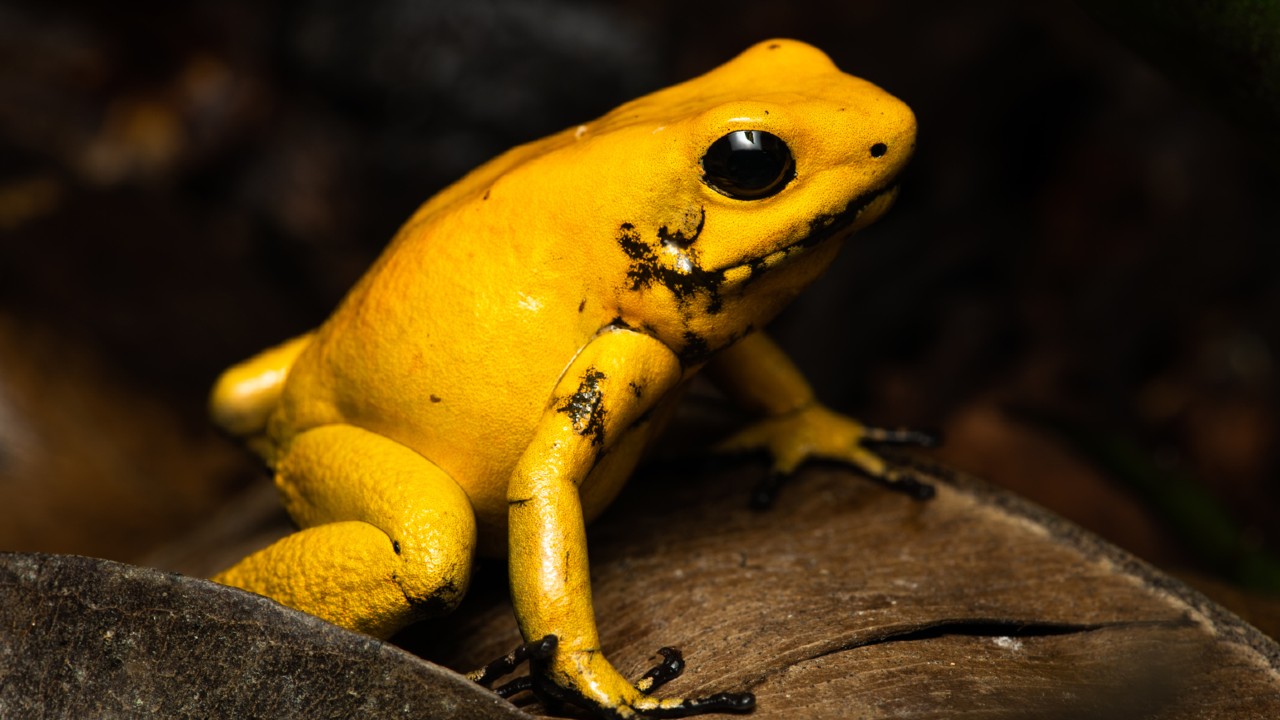
Glass frogs have translucent green skin that makes their internal organs, and even beating hearts, visible to the human eye. They've evolved for predators to look straight through them. A 2020 study published in the journal Proceedings of the National Academy of Sciences (PNAS) found that these frogs aren't truly transparent, but their camouflage is flexible.
"The frogs are always green but appear to brighten and darken depending on the background," lead author James Barnett, a behavioral ecologist at McMaster University in Ontario, said in a statement at the time. "This change in brightness makes the frogs a closer match to their immediate surroundings, which are predominantly made up of green leaves."
While there are thousands of known frog species, there are likely many more that scientists haven't found yet. For example, researchers described six new species from Mexico in April 2022, and each can fit comfortably on a thumbnail. The researchers noted at the time that the frogs could represent the tip of a giant iceberg of unknown amphibians just in Mexico, Live Science previously reported.
Related: Adorable 'chocolate frog' discovered in crocodile-infested swamp
Where do frogs live?
Frogs are found on every continent except Antarctica. They need to be around water sources to reproduce, but their habitats are extremely varied otherwise. Poison dart frogs hop through the tropical rainforests of Central and South America, while northern leopard frogs (Lithobates pipiens) inhabit much of North America's marshlands, brushlands and other habitats, including farmland and golf courses, according to the University of Michigan's BioKids website.
Some species live in highly specialized environments. For example, Vietnamese mossy frogs live in mossy, flooded caves and the banks of rocky mountain streams around 2,300 to 3,300 feet (700 to 1,000 meters) above sea level, according to the Smithsonian's National Zoo & Conservation Biology Institute in Washington, D.C. Meanwhile, desert rain frogs (Breviceps macrops) appear to live exclusively in the white sand dunes of Namibia and South Africa, burrowing into the sand during the day and feeding at night, according to the International Union for Conservation of Nature (IUCN).
Frogs have lungs, but they can also breathe through their skin by absorbing oxygen from water. They can still drown if their lungs fill with water or there's not enough oxygen in the water they're swimming in, according to the Burke Museum.
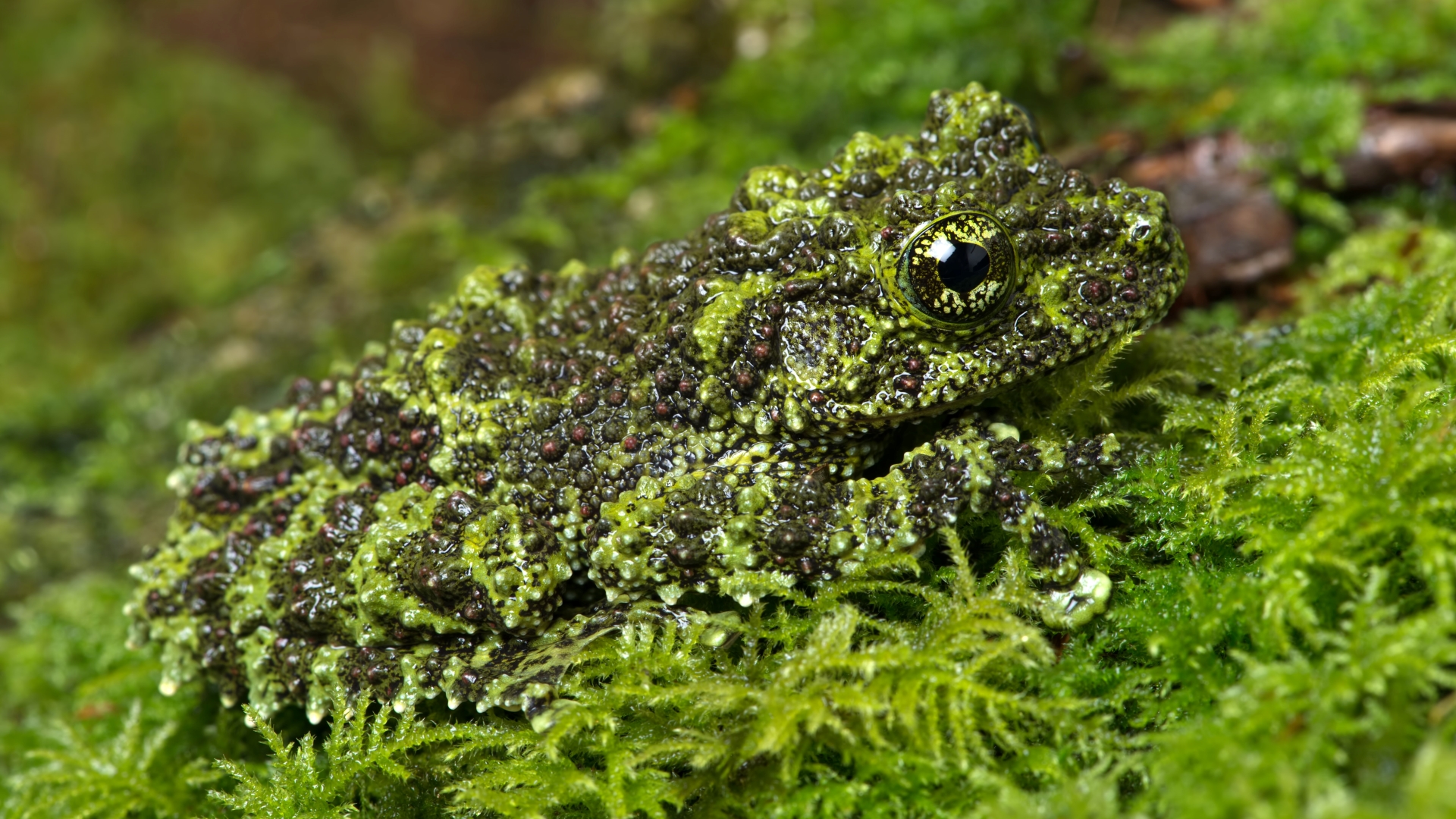
What do frogs eat?
Frogs have a wide diet that includes insects, spiders, worms, slugs, larvae and small fish. These amphibians play a vital role in the world's ecosystems by helping to keep insect populations under control, according to the San Diego Zoo. They catch prey using their quick, sticky tongues. A 2017 study published in the Journal of the Royal Society Interface found that frog tongues can catch insects in 0.07 second — five times faster than the blink of a human eye.
Related: Watch this frog light up after it swallows a firefly
Some frogs seek out much larger prey than flies and slugs. For example, cane toads (Rhinella marina), which typically grow to 9 inches (23 cm) in length, scarf down small birds, mammals and snakes with ease, as well as other amphibians and even table scraps and pet food, according to the Florida Fish and Wildlife Conservation Commission. Their native range stretches from the Amazon basin in South America up to southern Texas. But humans have introduced cane toads elsewhere, and their insatiable appetites can be a big problem for wildlife. They are an invasive species in areas such as Florida and Australia, where they compete with native amphibians and poison animals that try to feed on them, including pets and, in Australia's case, endangered species such as Tasmanian devils (Sarcophilus harrisii), according to the San Diego Zoo.
How do frogs reproduce?
Frogs have many mating strategies, and scientists are still learning about these animals' sex lives. For most species, mature males initiate the breeding process by calling loudly to tell females they are ready to mate, according to the Australian Museum in Sydney. Females filled with eggs approach calling males and choose one to mate with, usually in water. Fertilized eggs, or frog spawn, can incubate for anywhere between 48 hours and 23 days before hatching, depending on the species, according to the San Diego Zoo. Small, legless, fish-like tadpoles emerge from the eggs and begin life feeding on algae.
Tadpoles' transformation into mature frogs starts with the release of hormones from their thyroid glands, according to the book "Developmental Biology" (Sinauer Associates, 2000). Over time, tadpoles grow legs, lose their tails and emerge from the water capable of living on land. The word "amphibian" comes from the Greek words "amphi" and "bios," which translate to "both life," because they live in water and on land, according to the Oxford Learner's Dictionaries.
Related: 'Ancient death trap' preserved hundreds of fossilized frogs that drowned during sex
Do frogs hibernate?
Frogs are ectothermic, or "cold-blooded," like other amphibians, reptiles and snakes. This means they can't regulate their own body temperature internally like mammals do, and they rely on the external environment to stay warm, according to Froglife, a conservation charity based in the U.K. To survive winter in colder environments, frogs may go into a state of dormancy, called brumation, underwater or under log piles. Brumation is similar to hibernation, except frogs may occasionally emerge from their dormant state to eat.
Wood frogs (Lithobates sylvaticus) have an even more extreme winter survival strategy to survive in the northern forests of Alaska and Canada: They allow ice to fill their abdominal cavities and encase their internal organs. In this state, wood frogs' hearts stop beating and they appear to be frozen solid, but they're still alive in a state of suspended animation. The frogs survive because their livers produce glucose that prevents their cells from freezing. They begin to thaw out in spring, and at some point — though scientists aren't sure how — their hearts start beating again and they go on their way, according to the National Park Service.
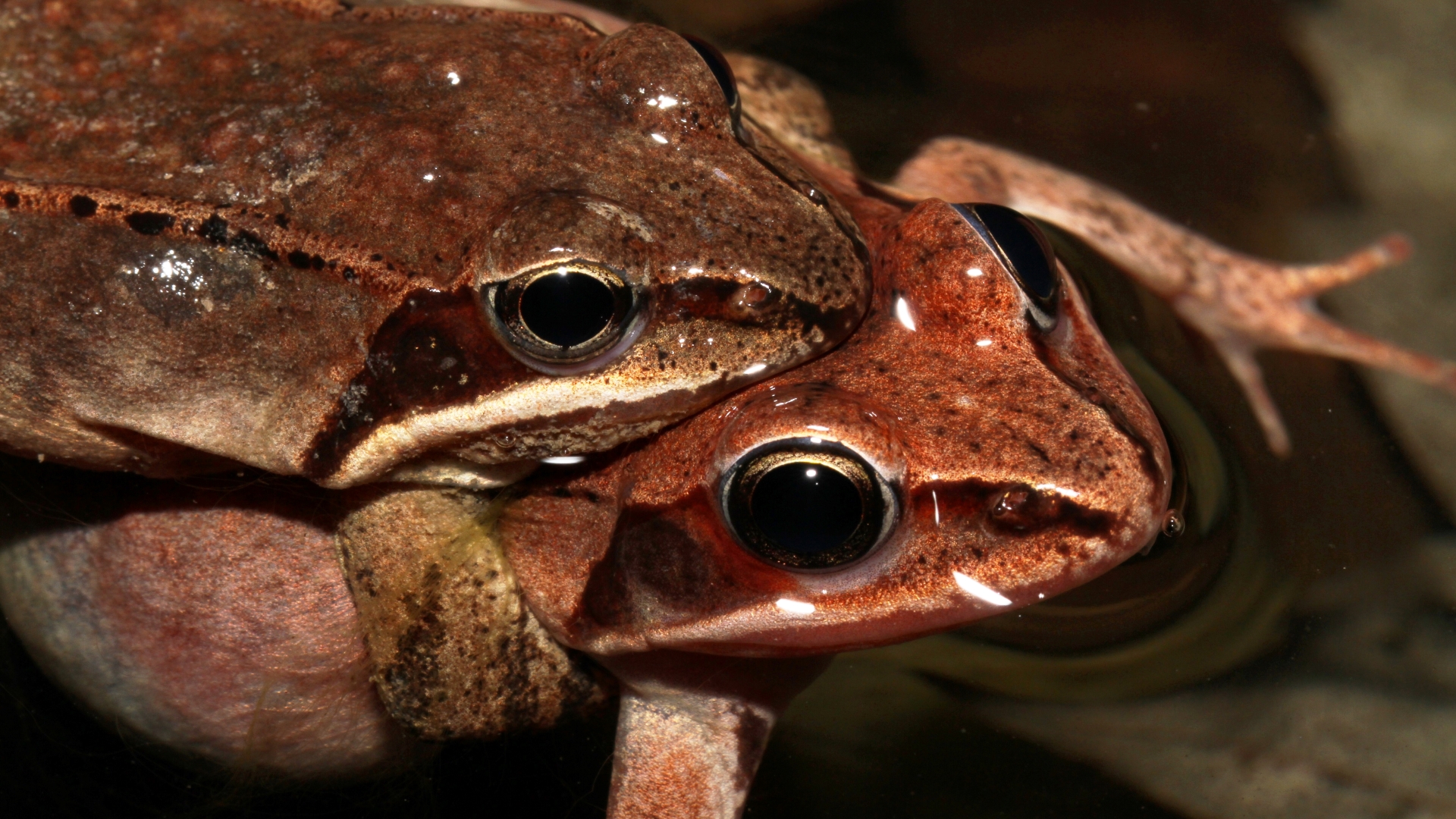
Are frogs poisonous?
The bumps on amphibians' skin aren't warts, and people can't contract warts from handling these animals. The myth that people can get warts from frogs likely stems from the wart-like appearance of the bumps, according to the Burke Museum. However, many frogs produce poisonous secretions that can irritate human skin or cause serious harm if ingested. For example, the most toxic poison dart frogs in the genus Phyllobates produce batrachotoxin, which disrupts the human body's nervous system and can cause paralysis, extreme pain and heart failure. As well as potential toxins, frogs can carry bacteria and parasites, according to the Burke Museum.
The secretions of frogs have played an important role in the development of human medicine; they're used, for example, to make painkillers and antibiotics. Furthermore, around 10% of physiology and medicine Nobel Prize winners used frogs as part of their research, according to Save the Frogs, an amphibian conservation charity based in California.
A few frogs are venomous as well as poisonous. Poison is harmful if ingested, but animals are venomous if they inject their toxins. A 2015 study published in the journal Current Biology found that two Brazilian frog species possessed bony spines on their skulls that they could use like venomous fangs. These frogs, called Bruno's casque-headed frogs (Aparasphenodon brunoi) and Greening's frogs (Corythomantis greeningi), headbutt potential predators to stab them with the spines and transfer toxins, according to the Natural History Museum in London.
Related: Frogs' skulls are more bizarre (and beautiful) than you ever imagined
Are frogs endangered?
Amphibians are the most threatened group of vertebrates on Earth; 40% of the amphibian species assessed by the IUCN are at risk of extinction. This means that many frog species are declining and need help from humans if they are to survive. According to the IUCN SSC Amphibian Specialist Group, some of the main threats facing amphibians are habitat loss and degradation, pollution, disease, invasive species, trade and climate change.
Frog extinction has disturbing implications for humans. The amphibians are highly susceptible to environmental disturbances, making frog populations a good indicator of the health of an environment, according to Save the Frogs. Therefore, the sheer number of amphibians at risk of extinction can be viewed as a wake-up call for the environmental damage that humans are causing to the planet.
Additional resources
For more information about how venomous frogs headbutt potential predators, watch this short YouTube video from the Natural History Museum in London. For tips on how to help your local frogs, check out the National Wildlife Federation website. To learn more about different frog species, check out "Frogs and Toads of the World" (Princeton University Press, 2011).
This article was originally written by Live Science contributor Alina Bradford and has since been updated.
Sign up for the Live Science daily newsletter now
Get the world’s most fascinating discoveries delivered straight to your inbox.

Patrick Pester is the trending news writer at Live Science. His work has appeared on other science websites, such as BBC Science Focus and Scientific American. Patrick retrained as a journalist after spending his early career working in zoos and wildlife conservation. He was awarded the Master's Excellence Scholarship to study at Cardiff University where he completed a master's degree in international journalism. He also has a second master's degree in biodiversity, evolution and conservation in action from Middlesex University London. When he isn't writing news, Patrick investigates the sale of human remains.




